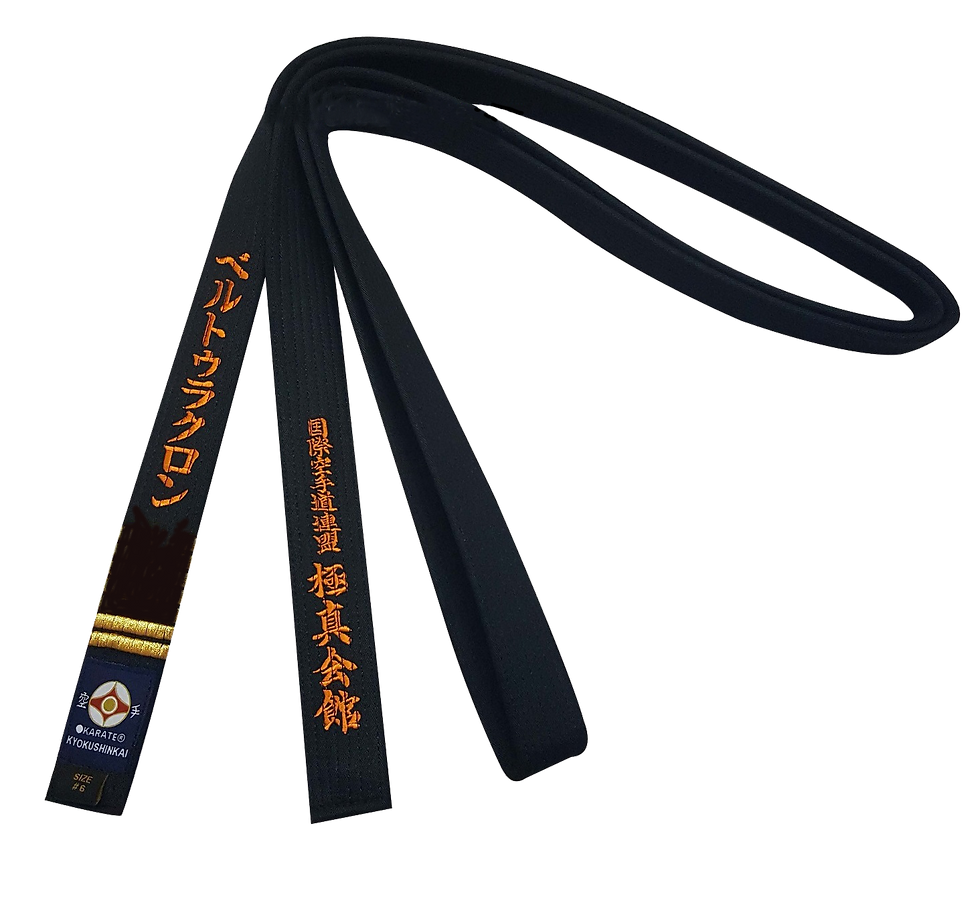
GRADING FOR BELT RANK
Kyokushin grading is a transformative journey—designed to break through self-doubt and awaken deep self-awareness. Through intense physical and mental challenge, students are pushed to their limits. What emerges is a clearer mind, a stronger sense of purpose, and an unshakable commitment to growth.


RANK
GRADING
CRITERIA
Belt testing is a comprehensive evaluation that challenges candidates to meet or exceed the standards set for each rank. Grading follows World So-Kyokushin international criteria, with additional requirements defined by the branch chief or dojo operator.
Power Test
Physical conditioning for endurance, basic techniques
Self Defense
Hand-to-hand techniques against single and multiple attackers
Kata
Traditional forms and movements at basic and advanced levels
Jiu-Jitsu
Throws, takedowns, submissions, and ground fighting
Weapons
Traditional weapons nunchaku, escrima, bo, tonfa, and sai
Kumite
Bare-hand integrative fighting against consecutive opponents
RANK REQUIREMENTS

In Kyokushin, rank is never given—it is earned.
Every belt must be achieved through hard work, personal growth, and meaningful contribution. At our dojo, we follow international World So-Kyokushin standards while honoring our local culture rooted in discipline, self-awareness, perseverance, and strength—both physical and emotional.
Our belt grading process is intentionally rigorous. It challenges students to push their limits, reflect deeply, and demonstrate progress not only in technique but in character. Advancement requires consistent effort, internal motivation, and service to others.
Belt Rank Overview:
-
Adult ranks follow solid belt colors (shown below).
-
Junior ranks mirror these colors with a white stripe (not shown).
-
Criteria for each rank are outlined below and may be adapted for younger children or older adults to support safe, developmental growth.
All students—especially children—are expected to maintain a martial arts journal to track their belt requirements, reflect on progress, and identify areas for improvement. Journaling cultivates self-assessment, accountability, and intentional learning, building a lifelong foundation of growth.
GRADING CRITERIA
REQUIREMENTS
BY GROUP
Grading criteria are also organized by group across belt ranks. This helps each student to determine the development progression needed to progress in a specific area of karate training.
.png)



















.png)
.png)
.png)
.png)